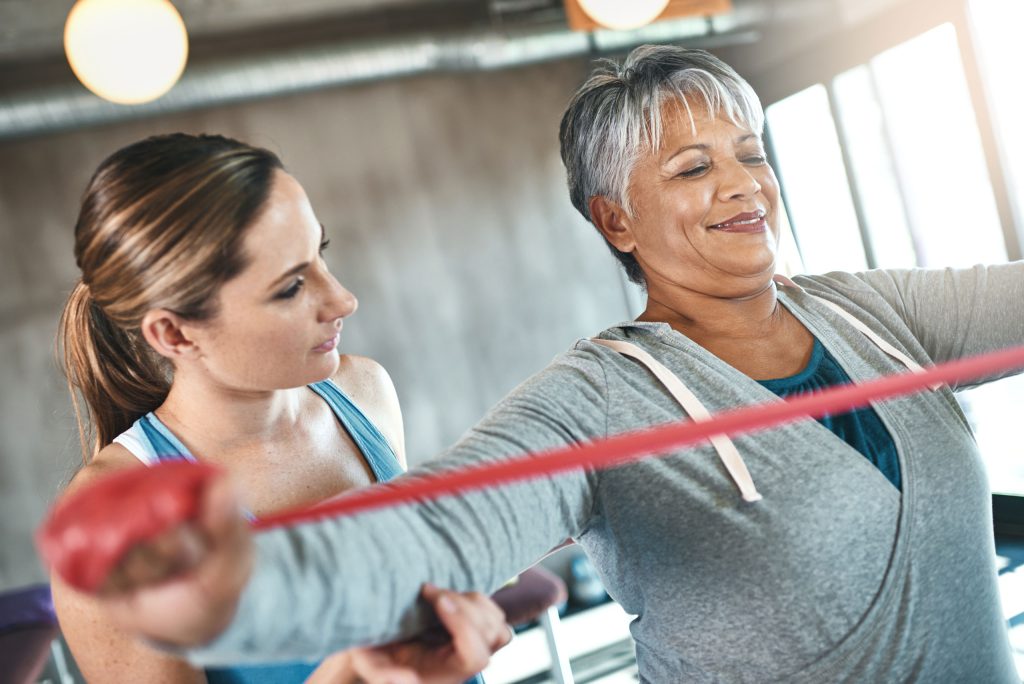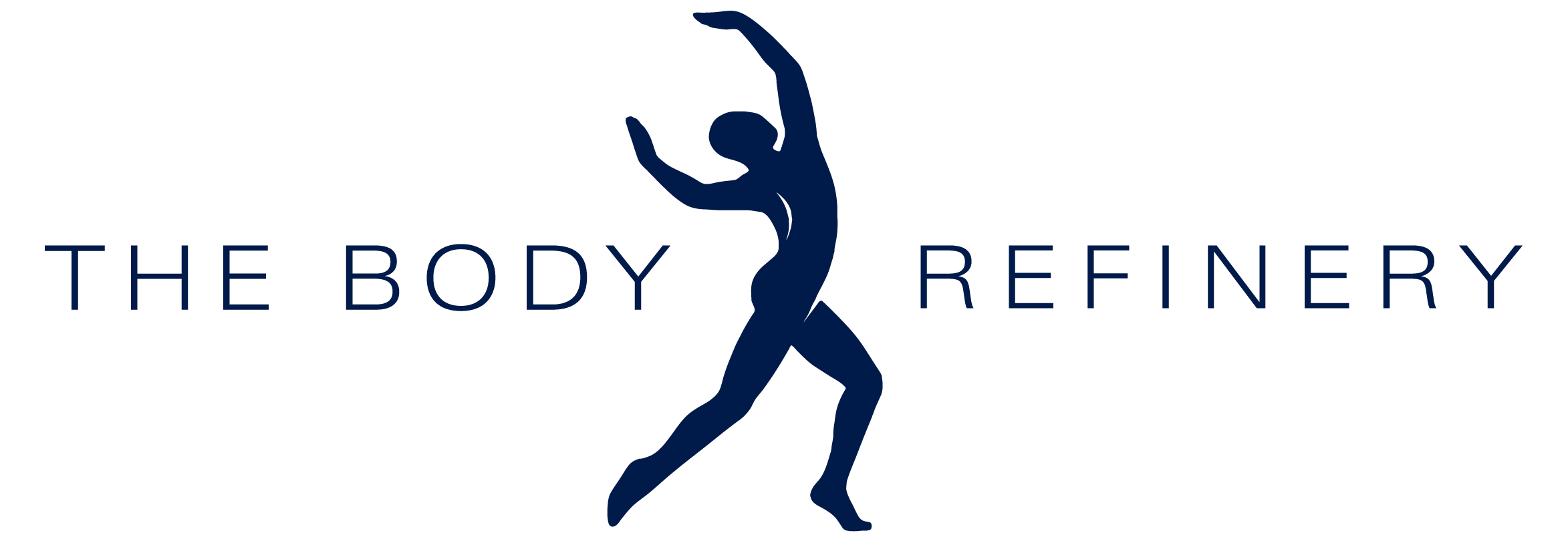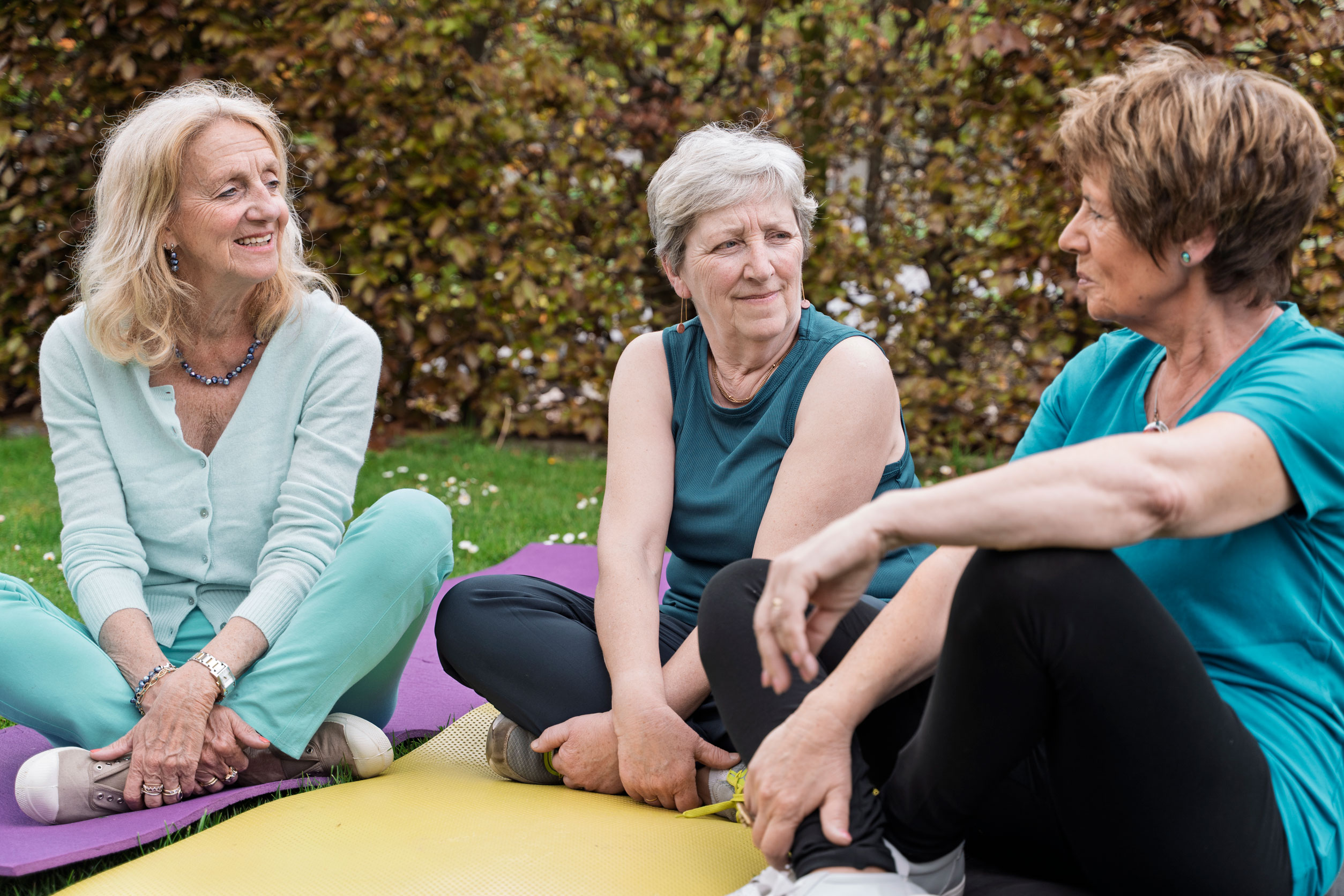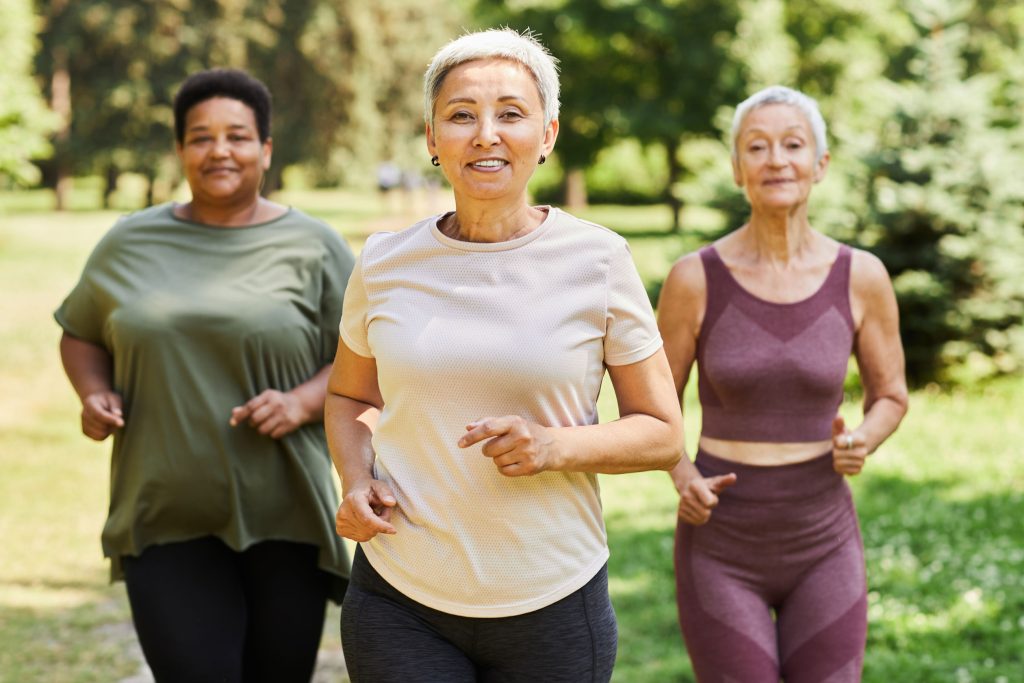Women can experience the menopausal transition differently, though common symptoms include hot flushes, mood changes, headaches, joint pains and irritability, all of which can understandably take a huge toll. It’s therefore important for women to understand what this transition means for their body, and more importantly, what methods and means can help with navigating these changes and minimising associated negative symptoms. You may be surprised to learn that exercise and physical activity may just be the best tool to help with this. So let’s look at the phases of the menopausal transition and the role exercise can play.
Phases of the Menopausal Transition
- Phase 1: Perimenopause
-
-
- Commences mid to late 40s to early 50s – lasting 5-10 years.
- Characterised by erratic peaks in estrogen, with a wide variation in menstrual cycle length and flow
-
- Phase 2: Menopause
-
-
- The phase from the final menstrual period until 12 months later.
- Symptoms of estrogen deficiency are more likely, including sleep disturbance, low libido, mood changes, and fatigue.
-
- Phase 3: Post-Menopause
-
- Estrogen and progesterone remain very low.
- Symptoms of low estrogen can persist, but often resolve within 2-5 years.
Let’s talk about Estrogen
Estrogen receptors are located pretty much everywhere in the human body, including the brain, reproductive tissues, bone, muscle, pancreas, liver, bladder, colon, immune system and adipose tissue. This explains why an overall decrease in this hormone leads to such a wide range of symptoms and changes to many systems within the body.
What does this mean for the body?
- Increased cardiovascular risk factors such as increased blood pressure, cholesterol and blood sugar levels (Elder et al., 2020).
- Body composition changes, including a loss of muscle mass and an increase in body fat accumulation (Juppi et al., 2020) (Greendale et al., 2019).
- Vasomotor symptoms, including hot flushes and night sweats (Woods et al., 2020.
- Cognitive decline, reduced attention, processing speed and working memory (Maiolie et al., 2021).
- Decline in bone mineral density, which increases risk of Osteoporosis and bone fractures (Beck et al., 2016).
Beneficial types of exercise
- High Intensity Interval Training (HIIT)
- Characterised by short, intense bursts of activity followed by brief recovery periods (e.g., 4 minutes of work, then 2 minutes of rest)
- Has been found to reduce blood pressure, blood sugar levels, lipid levels and inflammatory markers, whilst also improving cardiorespiratory fitness (Dupuit et al., 2020).
- Performing strength exercises in a circuit format is an effective way of implementing this!
- Sprint Interval Training (SIT)
-
-
- Characterised by supramaximal efforts followed by short rests (e.g., 12 sec sprint, 8 sec recovery).
- Quite a challenging type of exercise, it may take some time to build up to this level of intensity.
- Has been found to increase muscle mass, improve aerobic fitness and the efficiency of the heart, whilst reducing fat mass and blood vessel stiffness (Boutcher et al., 2019).
- This type of interval training could be performed on an exercise bike.
-
- Continuous Aerobic Exercise
-
-
- This may include a 30-minute walk, five days a week.<
- Has been found to decrease body fat and waist-hip ratio (Friedenreich et al., 2015).
-
- Resistance Training
-
-
- This may include bodyweight exercises such as a squat or plank, or can involve dumbbells or cable machines (e.g. shoulder press or seated row).
- Has been shown to improve full-body strength, bone mineral density, muscle mass and overall quality of life (Nunes et al., 2023).
- Load matters – consult your exercise physiologist to help you start at an appropriate weight for you.
- Frequency also matters – aim for at least 3 sets, two days a week.
-
- Impact Exercise
-
- May include hopping, step-ups, stomping, jumping, dancing or jogging.
- Essential to increase and/or maintain bone strength (Beck et al., 2016).
- Varying the direction of these movements is also recommended.

Our Exercise Physiologists (EPs) at The Body Refinery are here to support you during this transition and empower you to better navigate your menopause journey.
- You can access 1:1 sessions with one of our EPs to tailor an exercise program to suit you.
- Our EPs offer Better Bones classes which incorporate a combination of full-body strength, cardiovascular, impact and balance exercises. Join a group of like-minded individuals, improve your quality of life through exercise, and have fun whilst doing it!
- : ask your GP if you are eligible for a referral to see an EP on a GP Chronic Condition Menopause Plan (GPCCMP), which allows you to claim a Medicare rebate on up to 5 GPCCMP sessions. EP sessions can also be claimed through many private health insurance policies, depending on your level of cover.
Join our community at The Body Refinery, in New Farm. We look forward to welcoming you.
Written by Exercise Physiologist, Abbey Munro



